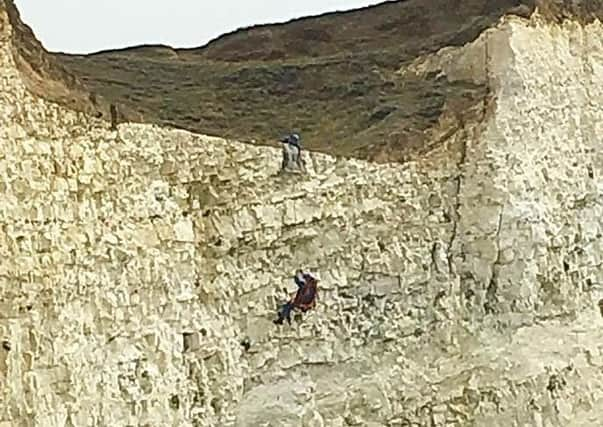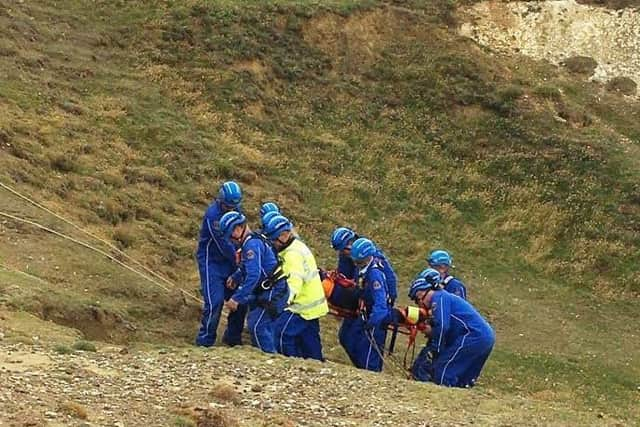Coastguard's dramatic cliff rescue of injured jet skier


Crews from Newhaven, Birling Gap and Eastbourne Coastguard as well as Newhaven Lifeboat were called to Splash Point in Seaford after the man had reportedly hit a submerged object and suffered a leg injury.
Although badly injured, he managed to get ashore and scramble onto a small cliff edge to escape the incoming tide at around 11.30am on Sunday (June 11).
Advertisement
Hide AdAdvertisement
Hide AdLifeboats weren’t able to reach him so, according to Newhaven Coastguard, a cliff technician was lowered down the 180ft drop and recovered the casualty to paramedics waiting at the cliff top.


A spokesperson for South East Coast Ambulance Service said an ambulance and paramedic car were called to the scene where the man – approximately in his 20s – had fractured his leg.
The spokesperson said he was treated at the scene before being taken as priority to Royal Sussex County Hospital in Brighton.
A spokesperson for the UK Coastguard said: “We commend the fact that the jet skier was wearing a lifejacket and an appropriate wetsuit which is exactly what we would recommend to anyone taking to the water on one of these crafts.
Advertisement
Hide AdAdvertisement
Hide Ad“His companion who phoned 999 and asked for the Coastguard also did exactly the right thing which ensure our quick response to the scene. We wish him a speedy recovery.”


The spokesperson added a safety message for anyone using a jet ski. They said: “We always advise that if you’re going to take a jet ski or personal watercraft onto the water then you should make sure you know how to operate these powerful machines by getting trained.
“You don’t want to find yourself in the water after being thrown off. This is also why we always recommend that you wear a buoyancy aid or impact vest and ensure you attach your kill cord to your personal buoyancy aid, so that if you end up in the water, the engine will stop.
“Take a hand held VHF radio with you and attach it to yourself, so you can contact the Coastguard if you get into difficulty.
Advertisement
Hide AdAdvertisement
Hide Ad“A Personal Locator Beacon (PLB) may be useful for more remote locations, along with mini flares and a fully charged mobile phone in a plastic bag.
“Although it’s not compulsory, we also recommend that people undertake the Royal Yachting Association’s (RYA) personal watercraft course which will give them the skills to use their jet skis and personal watercraft safely and with confidence. Joining a professional and reputable personal watercraft club is also a great way to take to the water safely.
“The majority of jet ski users are responsible, but in the past we have received complaints that jet skis have gone too fast and too close to shore. This is a concern to us as it’s putting swimmers and other beach-goers in danger.
“So if any bylaws are in place, stick to them and be respectful of others in the water. If you see anyone putting others at risk or in difficulty at the coast, call 999 and ask for the Coastguard.”